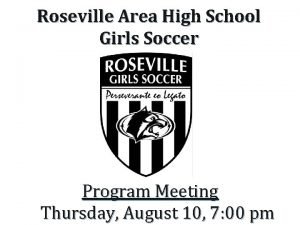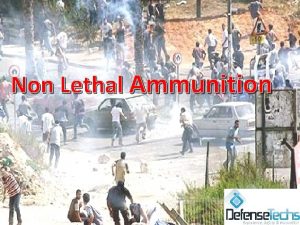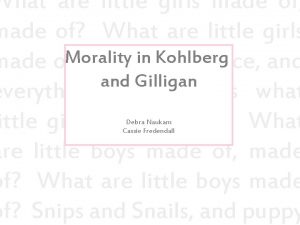THE GIRLS WHO MADE GRENADES The Warmley Grenadiers













- Slides: 13

THE GIRLS WHO MADE GRENADES The Warmley Grenadiers Image: Reproduced by kind permission of Kingwood Heritage Museum

This is Warmley High Street about 100 years ago near where it now joins with Stanley Road. Just behind these houses was a small factory called ‘Crane’s Fireworks’ where the workers played an important part in the Great War. Image: Reproduced by kind permission of Kingswood Heritage Museum

This is an old newspaper advertisement for the Crane’s Firework Factory in Warmley. Look at what they made. When war broke out in 1914 a fireworks factory was an obvious place to turn into a munitions factory It already had a work force used to dealing with dangerous materials and suitable buildings. They just needed to make it bigger and employ more workers. Image: Reproduced by kind permission of Kingswood Heritage Museum

Girls were not allowed to fight at the front. They could find work at home that was really valuable if they wanted to make a worthwhile contribution towards the war effort. Young girls were highly sought after by munitions factories as they were said to be quick and have nimble fingers for the work. Before the war many young girls were in low paid work, maybe as house maids or shop girls. As munitions workers they would work better hours and earn much more money because it was dangerous work. Image: ©IWM.

Before the war, it was traditional for women to stay at home, especially once they were married and had a husband family to look after. These girls were part of a new trend of working women. Whilst the men were away at war they were discovering a new independence. The factory workers posing for the camera above, are mostly young women. There a few men over 40 years. Some of these men may have been no longer fit enough to fight but could still work. Image: Reproduced by kind permission of Kingswood Heritage Museum

As they came into the workplace the girls changed into their work clothes. They wore a thick fireproof grey overall with a hat or bonnet to tuck their hair into and wooden clogs with rubber soles when working They would be inspected everyday. They were not allowed to wear anything metal, not a hook or a hairpin, in case of sparks that might cause an explosion. Image: Reproduced by kind permission of Kingswood Heritage Museum

The girls enjoyed sport in their spare time, forming a Tug-of War team they called themselves the Warmley Grenadiers. They had great fun playing against other girl’s factory teams. Look at their team kit, long dark skirts and white shirts, with dark bows and stout boots. Image: Reproduced by kind permission of Kingswood Heritage Museum

This is the girls in action at an event playing the girls from the nearby Douglas motor bike factory. It was a popular event with many spectators in the stands and on the field, all dressed up for the occasion. Women’s sports like this, along with football and hockey were very popular at this time, part of the new found independence of women. Image: By kind permission of Kingswood Heritage Museum

The huts the girls worked in were made of corrugated iron where they would freeze in winter and bake in summer. When the girls were packing the boxes with the grenades. They would often put in a little note, to cheer up the soldiers at the front. Image: ©IWM These were commonly known as a ‘Billy Do’ from the French ‘Billet Doux’ literally translated means ‘sweet letter’ or love letter.

Billy Do’s These would be in the form a short saying or a poem and were very popular at the time. The girls must have imagined the brave young soldiers finding these Billy Do’s as they opened the boxes of grenades and being cheered up by knowing that the girls at home were thinking of them. The girls often received replies to their Billy Do’s, some with kisses and some in foreign languages! One lady is even said to have married a soldier she got to know through writing these Billy Do’s. Image: Reproduced by kind permission of Frenchay Village Museum

The factory had a good safety reputation throughout the war. Nearly one hundred workers produced ten million grenades, making a substantial contribution to the conflict. Seventy five million grenades were said to have been produced nationally during the First World War Image: Reproduced by kind permission of Kingswood Heritage Museum

The unveiling of the war memorial on the corner of Stanley Road, Warmley. The money was raised by local people, to create a park and erect a memorial to all those that had died in the war. The park and the memorial are still there, though the cannon was taken away in the Second World War to be melted down for armaments. Many of the local girls stayed on as the factory went back to making fireworks. Others returned to domestic life. But their world had changed forever. Image: Reproduced by kind permission of Kingswood Heritage Museum

This Learning Resource has been produced by the South Gloucestershire in the First World War Project 2014 – 2018, a public engagement project commemorating the centenary of the First World War. The people of South Gloucestershire served in the armed forces, became nurses and worked in factories. They made aircraft, motorbikes and boots for the servicemen: even the horses were sent to the front line of The Great War. This project tells the stories of the contribution that South Gloucestershire made to the First World War. THE GIRLS WHO MADE GRENADES - The Warmley Grenadiers KS 2/3 The children will learn how some of the local girls of Warmley played their valuable part in the war effort making grenades and keeping up the morale of the troops at the front National Curriculum: History/English. The story of the factory girls of Warmley who made 10, 000 hand grenades or ‘Mills Bomb’ during the First World War. They played sports and also wrote poetry or ‘Billy Do’s and tucked them into the boxes of grenades for the soldiers to read, to keep up their morale on the battlefront. Teachers Information This Learning Resource Contains: • A Power. Point presentation • Accompanying Teacher's Information and suggestion notes for each slide (Downloadable with this Power. Point on the SGC project website) • Activity – Writing poems • Other First World War Project Learning Resources • Feedback form Copyright and permissions. This Learning Resource is based on information and images from Kingswood Heritage Museum with further images from Frenchay Village Museum and the Imperial War Museum and reproduced with their kind permission. This learning resource has been created by the South Gloucestershire in the First World War Project. All images and text are copyright reserved, to be used for educational or research purposes only. ©South Gloucestershire Council.
 Employ hand grenades
Employ hand grenades Stafford girls
Stafford girls Verbal irony in mean girls
Verbal irony in mean girls Precocious puberty in girls
Precocious puberty in girls Jesuit handbook on lycanthropic culture shock
Jesuit handbook on lycanthropic culture shock Chij st joseph convent
Chij st joseph convent Craiglist escorts lykens pa
Craiglist escorts lykens pa Wives want nsa kiowa
Wives want nsa kiowa Laura kangas
Laura kangas Mens lacrosse helmet
Mens lacrosse helmet Autism in girls checklist
Autism in girls checklist Top girls act 1
Top girls act 1 Walton girls' high school & sixth form
Walton girls' high school & sixth form Roseville girls soccer
Roseville girls soccer
























